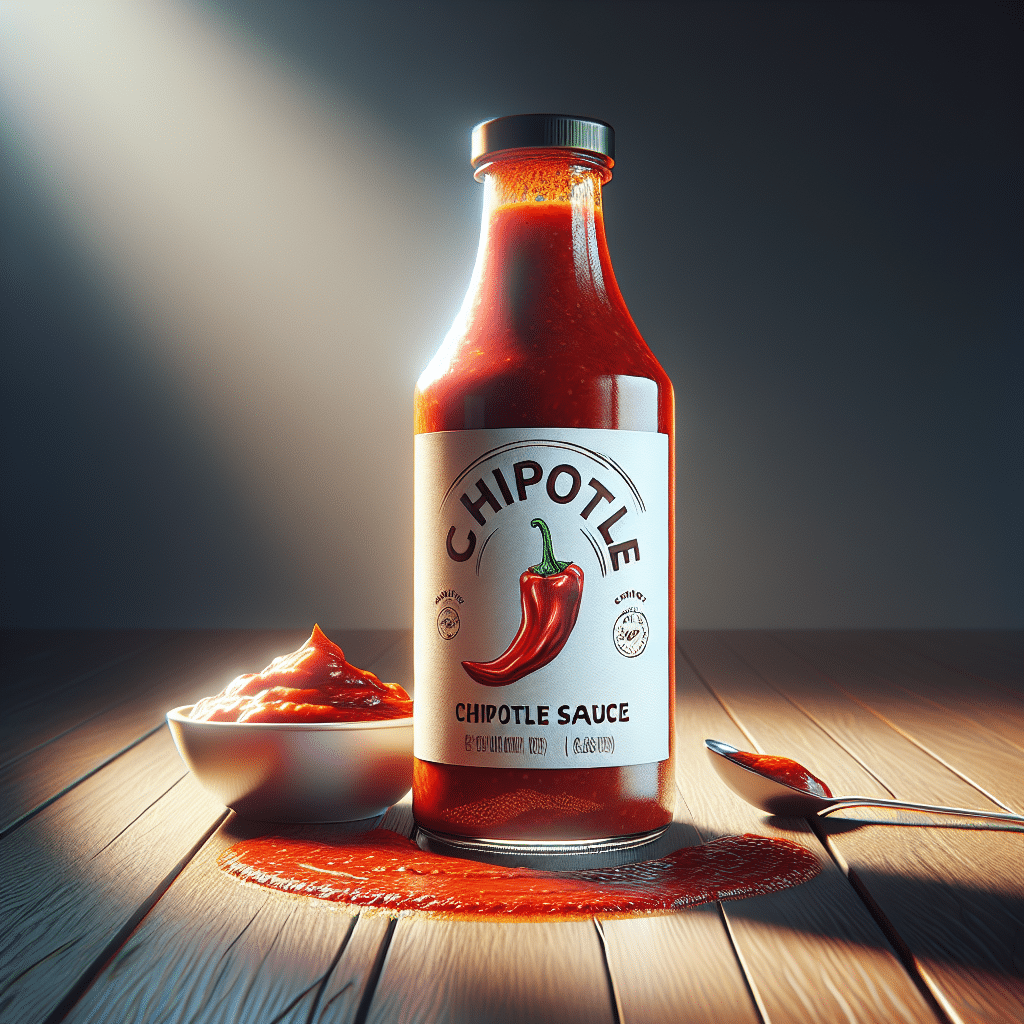Chipotle sauce is a zesty condiment that features smoky, spicy flavors derived from chipotle peppers—smoked, dried jalapeños that are widely used in Mexican cuisine. This sauce is typically a blend of chipotle peppers, vinegar, and various seasonings, which can include garlic, lime juice, and mayonnaise or yogurt for creaminess. The result is a versatile sauce that can elevate a variety of dishes, lending richness and a touch of heat. It’s commonly drizzled over tacos, burritos, nachos, and even salads, making it a popular choice for those who enjoy adding depth and flavor to their meals.
Introduction to Chipotle Sauce
Chipotle sauce, with its unique combination of smokiness and spiciness, has become a staple in American and Mexican dishes. Understanding its ingredients and variations can help you appreciate its culinary applications. This article will delve deep into what chipotle sauce is, how it is made, its history, uses, and much more.
Understanding Chipotle Peppers
At the heart of chipotle sauce are chipotle peppers. These are ripened jalapeño peppers that undergo a drying and smoking process. The smoking infuses the peppers with a distinctive flavor that is intensely rich and occasionally fruity. Chipotle peppers come in various forms, including:
- Chipotle Powder: Dried and ground chipotle peppers, used as a spice.
- Canned Chipotle Peppers: Chipotles preserved in adobo sauce, adding flavors of garlic, vinegar, and spices.
- Chipotle Paste: A concentrated form of chipotle, often mixed with other ingredients for a more cohesive flavor.
The Ingredients of Chipotle Sauce
While there are countless variations of chipotle sauce, some basic ingredients are commonly found:
- Chipotle Peppers: The primary ingredient that provides the signature flavor.
- Vinegar: Adds acidity and helps balance the heat.
- Garlic: Enhances flavor depth and provides aromatic qualities.
- Lime Juice: Cuts through the richness and adds brightness.
- Sweeteners: Ingredients like honey or sugar can be used to balance the heat.
- Mayonnaise or Yogurt: These are optional but create a creamier texture and mellow the spice.
How to Make Chipotle Sauce at Home
Creating chipotle sauce at home is straightforward and allows for customization to suit your taste preferences. Here’s a basic recipe:
Ingredients
- 2-3 chipotle peppers in adobo sauce (or 1 tablespoon chipotle powder)
- 1 cup mayonnaise (or Greek yogurt for a lighter option)
- 1 tablespoon lime juice
- 1-2 cloves of garlic, minced
- Salt to taste
Instructions
- In a mixing bowl, combine the mayonnaise and minced garlic.
- Add the chipotle peppers (chopped) or chipotle powder and lime juice.
- Mix well until all ingredients are combined.
- Add salt to taste and adjust the spiciness by adding more chipotle if desired.
- Cover and refrigerate for at least 30 minutes before serving to enhance the flavors.
Uses of Chipotle Sauce
Chipotle sauce is remarkably versatile. Here are a few common uses:
- Tacos and Burritos: Drizzled or spread inside to add richness.
- Salads: A perfect dressing to add a smoky element to greens.
- Grilled Meats: Marinade or sauce for chicken, pork, or beef.
- Vegetable Dishes: A finishing sauce for roasted vegetables.
- Sandwiches and Wraps: Spread on bread or wraps for extra flavor.
Health Benefits of Chipotle Sauce
While chipotle sauce is primarily used for flavor enhancement, several ingredients contribute to its nutritional profile:
- Vitamins and Minerals: Chipotle peppers are rich in vitamins A, C, and E, which support skin health and immunity.
- Capsaicin: The compound that gives peppers their heat can boost metabolism and promote weight loss.
Common Misconceptions
Many people assume chipotle sauce is just about heat; however, the complexity of flavors—smokiness, sweetness, and acidity—makes it a gourmet flavor enhancer. Additionally, some might think that all chipotle sauces are creamy due to their popular variations, but many are simply pureed or more liquid without dairy complements. Understanding these variations can help one select the right sauce for culinary endeavors.
Chipotle Sauce Variations
Over time, various adaptations of chipotle sauce have emerged, including:
- Chipotle BBQ Sauce: A blend of chipotle sauce with ketchup and spices for a smoky barbecue flavor.
- Vegan Chipotle Sauce: Utilizing plant-based ingredients like cashew cream instead of mayo.
- Chipotle Ranch Dressing: A creamy ranch dressing with the addition of chipotle flavoring.
Where to Buy Chipotle Sauce
If cooking isn’t your style, chipotle sauce can easily be found in grocery stores, especially in the condiment aisle. Look for brands that emphasize quality ingredients, such as:
- Chipotle Southwest Sauce (popularized by fast-food chains)
- Goya Chipotle Sauce
- Tessemae’s Organic Chipotle Sauce
FAQs about Chipotle Sauce
1. Is chipotle sauce very spicy?
Chipotle sauce can vary in spiciness, but it typically possesses a moderate heat due to the chipotle peppers. If you’re sensitive to spicy foods, consider starting with small amounts and adjusting to your taste.
2. Can I make chipotle sauce without mayonnaise?
Absolutely! You can substitute mayonnaise with Greek yogurt, sour cream, or leave it out entirely for a thinner sauce.
3. How long does homemade chipotle sauce last?
Homemade chipotle sauce can last up to one week in the refrigerator if stored in an airtight container.
4. Can I freeze chipotle sauce?
Yes, chipotle sauce can be frozen. Place it in a freezer-safe container, and it should keep well for up to three months. Thaw in the refrigerator before use.
Conclusion
Chipotle sauce is more than simply a condiment; it’s a culinary experience that adds depth and flavor to a myriad of dishes. Whether you prefer it creamy or as a simple puree, understanding its ingredients and uses can transform your cooking. Experimenting with this versatile sauce can lead to exciting new flavor combinations and elevate your meals.


